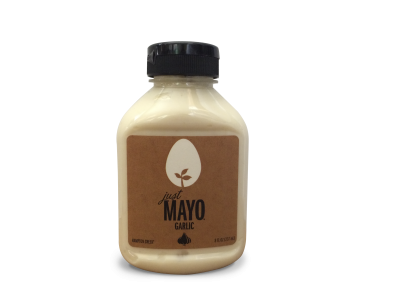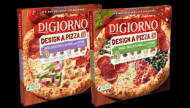Partnership for a Healthier America Summit
Making healthy food affordable, accessible to low-income shoppers can be a win-win, execs say

“Nothing frustrates me more than thinking that good food for the body and environment only has a place with people who make more than $100,000. We all miss the point if we think that,” said Joshua Tetrick, CEO of Hampton Creek, which makes plant-based Just Mayo and Just Cookies.
“Folks who are living out of a white envelop” need and deserve healthy food, too, and manufacturers can make great tasting, nutritious food accessible and affordable and still succeed in business by taking a different distribution approach than the one traditionally used by health foods, he explained at the Partnership for a Healthier America’s Summit in Washington Feb. 26-27.
He scoffed at the myth that lower income people are not interested in or willing to buy healthy foods, noting that he is proud to sell his better-for-you mayo and products at Dollar Tree stores in lower-income neighborhoods.
“You don’t have to always talk about how it is good for someone or the environment to sell it. Because if you make the thing so damn good, it is funny how many people will choose it,” he said. And the fast-paced growth of his business, which launched in 2011, is a testament to his philosophy. (Read more about Hampton Creek’s rapid ascent HERE.)
Improving access through mainstream stores
Frozen entrée company Luvo also deliberately chose to go into mainstream grocery stores instead of the natural channel to make its nutritious meals more accessible to lower income shoppers.
CEO Christine Day explained at the Summit that going into the natural channel first would have been easy for Luvo, which markets organic, non-GMO frozen meals with a healthy ratio of fiber, protein and healthy fats, less than 1 teaspoon of sugar and less than 500 mg of sodium.
“But,” she said, “that is not who needs it as much” as lower income shoppers with limited accessibility to health, fresh foods.
To better reach lower income shoppers, Luvo also positions its frozen entrees at an affordable price point of around $5, Day said.
Price is not everything
Luvo also focuses on making healthy food appealing, not just less expensive, by starting with “familiar favorites,” such as turkey meatloaf and barbeque chicken, and then adding ingredients like quinoa and faro in a “way that is seamless” for consumers, so they do not feel like they are making a sacrifice for health, Day said.
She added that Luvo also includes reasonable portions of antibiotic- and hormone-free meat in its meals, “because not everyone wants to become a vegetarian” to eat healthy.
Offsetting costs to invest in quality
Day recognizes that providing healthy food at a low price point is difficult for many firms because the profit margins at most food companies already are low and more nutritious ingredients often cost more.
However, she says, it is doable for firms if they rethink their overall budget and business strategy.
For example, to pay for more expensive and nutritious ingredients without sacrificing a low price point or profits, Luvo skips traditional advertising in favor of less expensive non-traditional marketing tactics, Day said.
“We take the money that we would have spent on traditional advertising and reinvest it in our quality of food so that we can still maintain a low price point,” she explained.
Feeding America
Creative business strategies like this are essential to feeding and improving the health of lower income shoppers in America, other presenters at the Summit said.
In particular, they are important because according to USDA 14.5% of households in the U.S. are food insecure. According to Feeding America, a nationwide network of food banks, 79% of households who seek its help providing food, report buying inexpensive, unhealthy food as a way to feed household members. This climbs to 84% in homes with children.
In addition, approximately 40% of Feeding America clients cope with food insecurity by watering down food and drinks, the organization notes in its 2014 Hunger In America report.
Making nutritious food accessible and affordable could help reduce the reliance on these coping strategies, and improve the U.S. population’s health overall.









